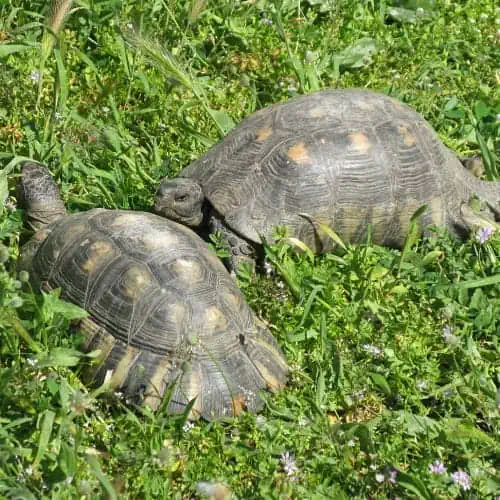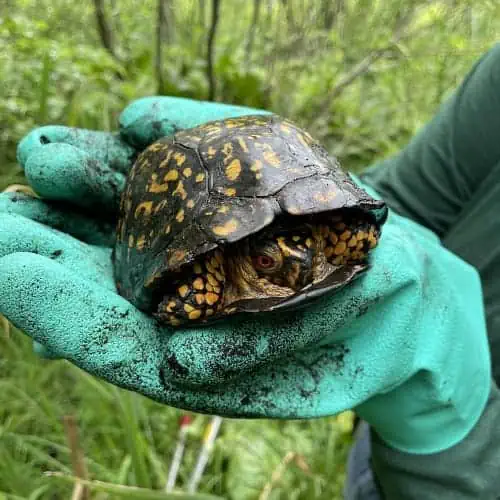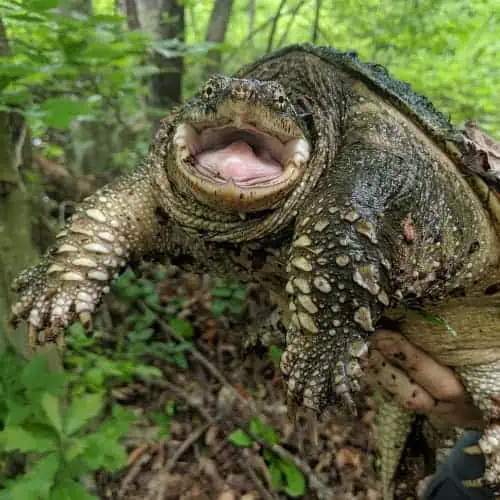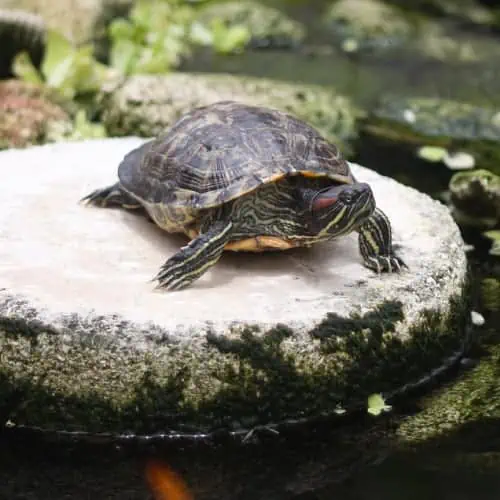
It may be that time of year again – when children can freely frolic in the outdoor warmth, exploring the summer sights and making the most of seemingly endless days. It’s definitely not unusual to find many little critters scurrying about in search of food and shade. Many of these will hide at the first sight of humans, though some may be too slow to find cover before they are spotted. A humble turtle, for example, might stay out in the open for longer than it should, relying on its shell for protection.
Known for being low-maintenance and educationally rewarding pets that even young children can care for, freshwater and terrestrial turtles are becoming increasingly popular. Many species are now captively bred and sold all across the globe. While it may be acceptable and legal to purchase some of these “exotic” species from reputable pet shops, taking one from the wild may have many consequences.
It may seem all too easy to simply pick up a wild turtle, take it into your home, and care for it as you would a pet. If you truly care about sanitation, wildlife conservation, and animal safety, however, you most definitely would not touch wild turtles in the first place. Simply put, you should not keep wild turtles as pets, even if they appear to be in need of your help.
Dangers of Handling Wild Turtles

Wild turtles should be handled with extreme caution as they can either harm you or you may inflict harm on them. Experts will often warn laymen and environmental enthusiasts about the dangers of coming into contact with wild animals. Although many turtles will retreat into their shells and seldom resort to biting the source of a threat, they are effective vectors of disease.
Indeed, wild turtles are cute, but the bacteria they may carry certainly are not. The surfaces of their shells and their skin harbor colonies of potentially life-threatening pathogens. One of the most common illnesses brought about by handling wild turtles is salmonellosis. Caused by Salmonella bacteria, this disease can infect people and induce symptoms like fever, gastrointestinal pain, bouts of diarrhea, nausea, and headaches.
The risks of being infected are highest in children, infants, and the elderly. Even turtles that are thoroughly cleaned in water may carry the disease and spread it to surfaces around the home. If you do find yourself handling wild or captive-born turtles at any point in the future, always make sure to observe proper hygiene practices and good judgment.
Some Wild Turtles Bite

Wild snapping turtles, which can easily be found throughout eastern North America, can undoubtedly pack a strong bite. Legend has it that the largest of their kind, which any persons with common sense would stay well away from, could break finger bones in half! Small or large, these animals should most definitely not be handled, let alone by hand. If you find them causing trouble on the road or on your property, consult your local wildlife unit.
Biological Consequences of Removing Turtles From the Wild

As turtles are long-lived and slow to mature, they have remarkably slow growth rates and can take years to produce enough offspring to secure their genetic lineage. Removing them from the wild may not only slow their growth and endanger their personal survival; it will also threaten the longevity of their wild populations. Deliberately removing a healthy individual from its population makes a farce of all the energy it has put into creating its shell and surviving in the wild.
There’s no guarantee that even young turtles are more likely to thrive in a home setting compared to an adequate environment in the great outdoors. Just a few are able to make it into adulthood, largely due to anthropogenic disturbances that cause shifts in pristine ecosystems. By leaving turtles to their own devices, you passively increase their chances of finding a mate and fulfilling their natural roles.
Taking wild turtles into homes in an urban setting is made even more threatening by exposing them to children, other pets, and many sources of chemical pollutants. Moreover, it opens up the possibility of accidents that may occur if the turtle manages to escape in an attempt to return to its native habitat. Even if you have the means to pamper a wild turtle or provide it with a “loving” home, you would not be doing it a favor by keeping it as a pet.
Is It Legal to Keep a Wild Turtle?

In areas with environmental laws and conservation policies, it is usually illegal to keep wild turtles as pets. If one chooses to enter your property or pond on its own, you would not be held culpable or responsible for its survival. Many persons with wildlife ponds and other types of water features are able to successfully attract wild turtles, which become vital to the ecological balance in their gardens. As long you don’t actively try to restrict or trap one, allowing a turtle to live on your property should be acceptable.
Actively picking a turtle up from the wild and fully displacing it is another matter. Unless you are doing so for research and have the necessary permits, you would do well to leave wild turtles on their own. If the wild turtle was brought to your home by a child, try to gauge where it was taken from and carefully return it as soon as possible. If the wild turtle in question has been in your possession for several weeks, consult the local authorities for assistance.
How to Help Wild Turtles

As modern developments continue to encroach into the wild, causing natural systems to become fragmented, many animals enter urban zones in search of their mates, resources for survival, and ideal habitats. Turtles are occasionally found attempting to cross roads and roaming around large parking lots. Some drivers opt to take them by the shell and move them to an area where they are less likely to get hit by cars. More often than not, this should be the full extent of one’s help.
Injured or evidently ill turtles may require human assistance to recover and return to the wild. If you spot one, consult a local expert or a veterinarian. They should be able to assist you and guide you so that you or they can safely bring the turtle to an area where it can be cared for properly. Once the turtle has recovered, the experts should then be able to determine how and where to release it.
If the turtle appears healthy and is found in a natural and safe area, the best way to truly help is to leave it be. Another more radical means of helping wild turtle populations is by boycotting pet stores that cannot prove their animals are raised in captivity. Unfortunately, many wild turtles continue to be illegally removed from the wild and sold in areas that weakly enforce laws for animal protection.

